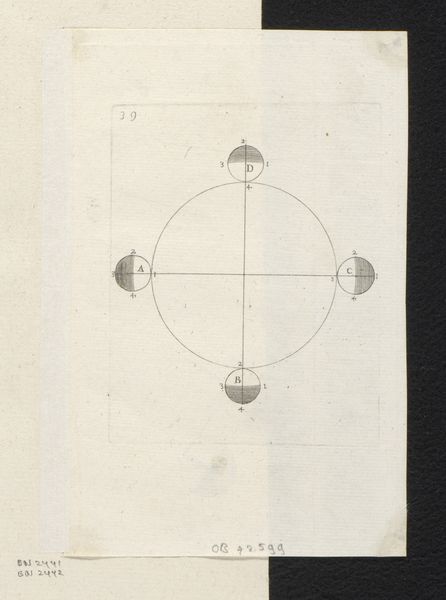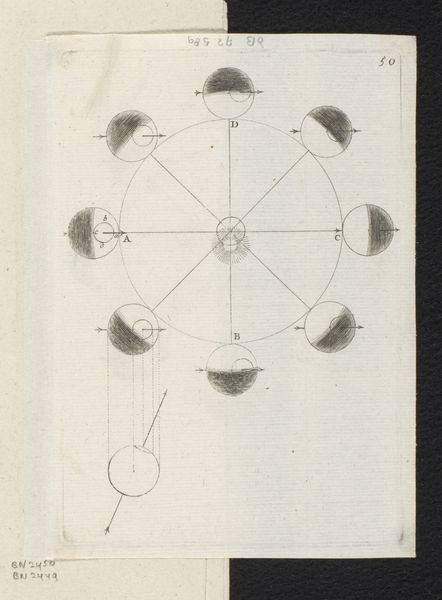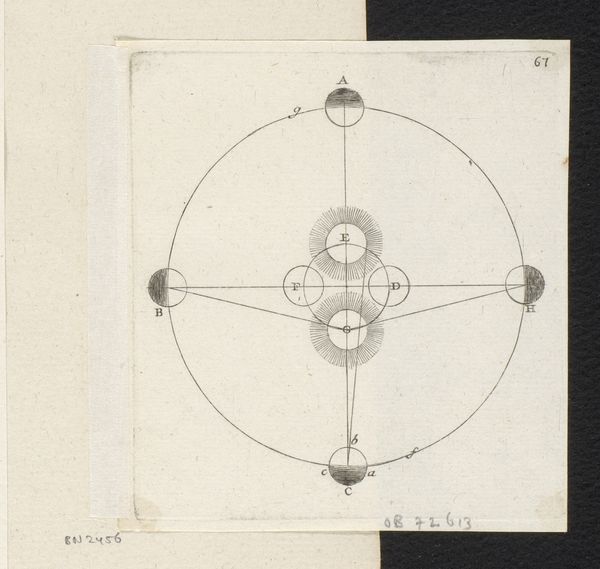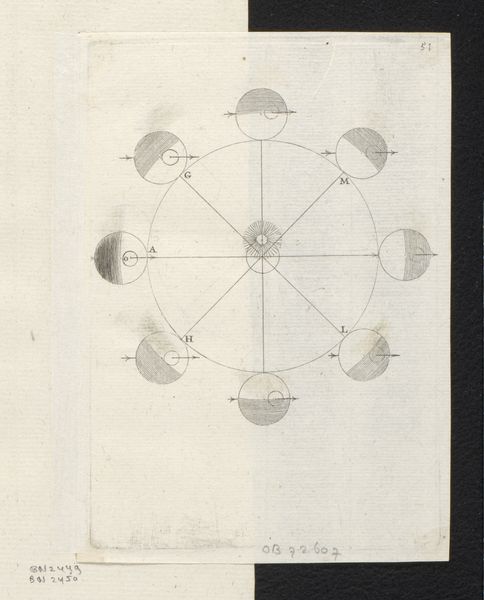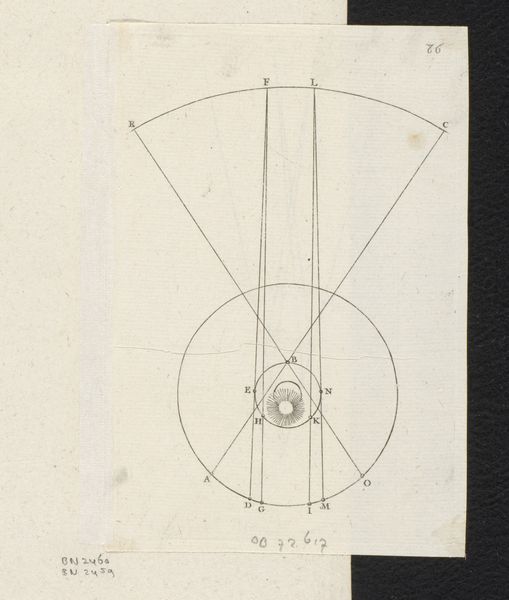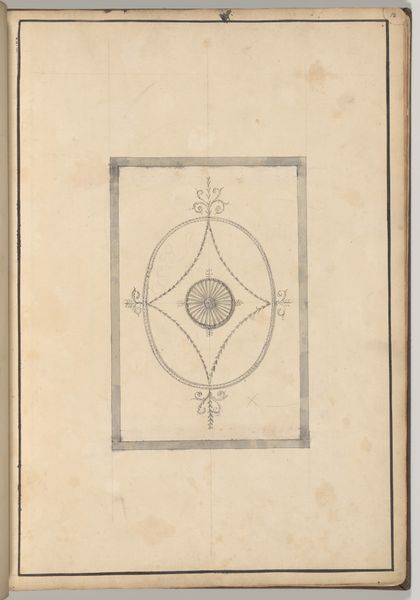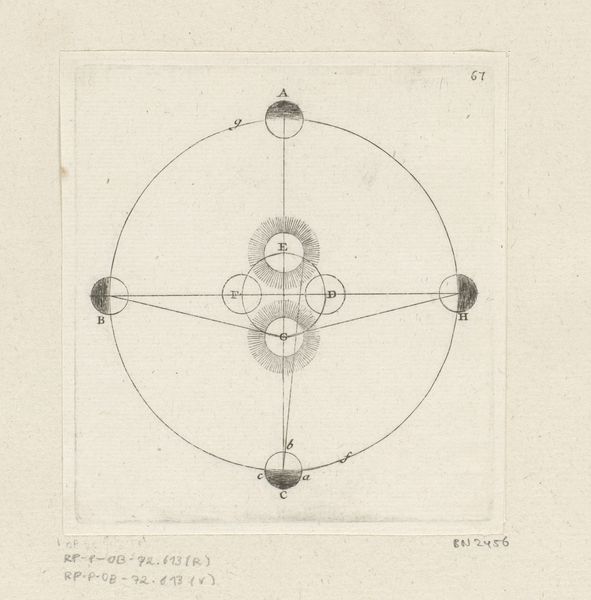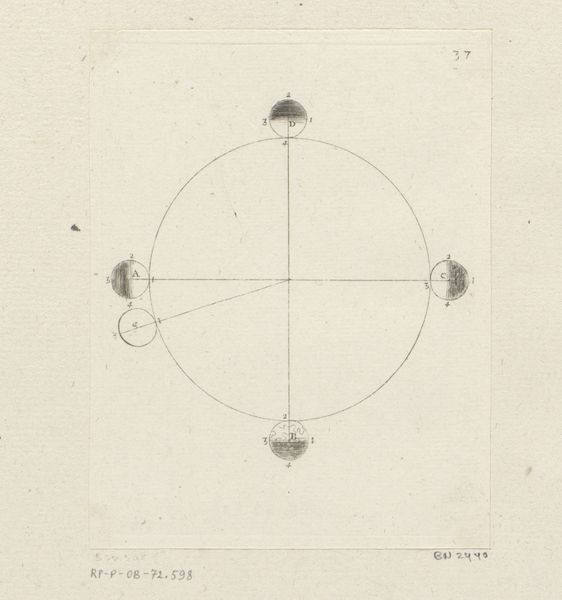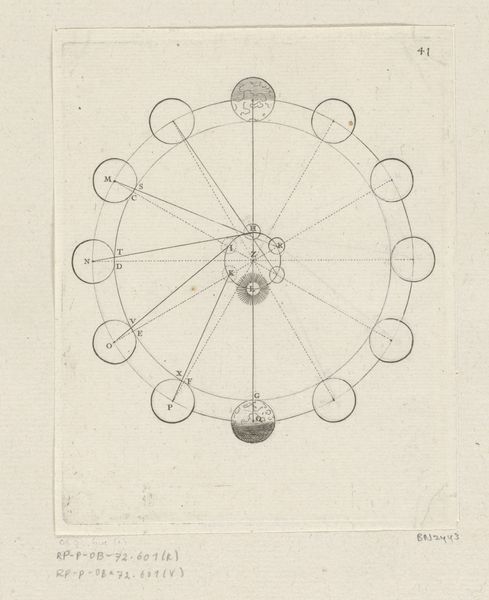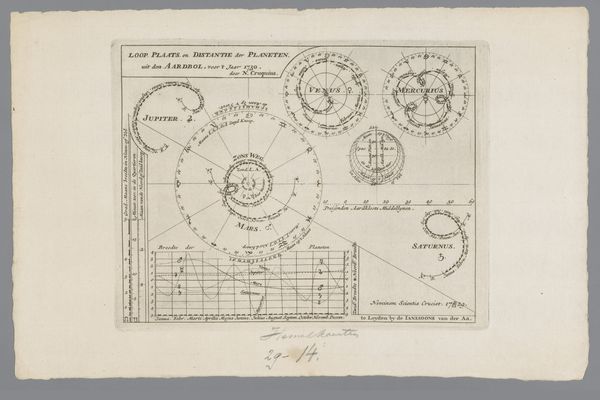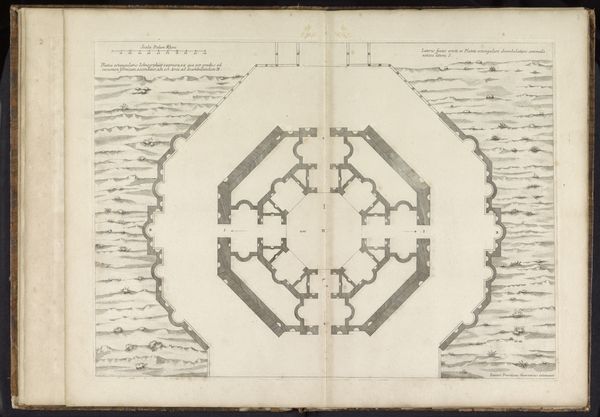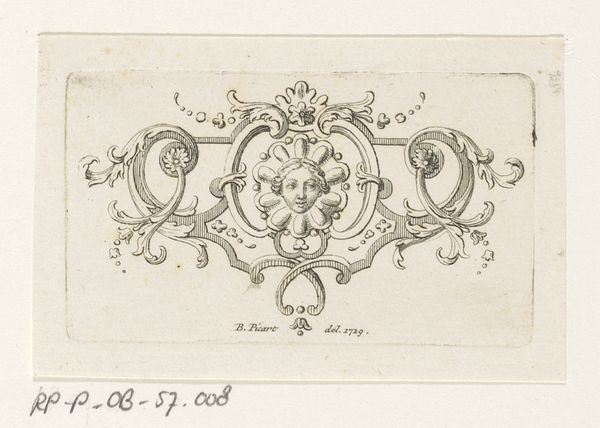
print, engraving
#
baroque
# print
#
old engraving style
#
geometric
#
line
#
history-painting
#
engraving
Dimensions: height 141 mm, width 110 mm
Copyright: Rijks Museum: Open Domain
Curator: This engraving, "Beweging van de Aarde om de Zon gedurende twaalf maanden"—"The Earth's Movement Around the Sun During Twelve Months"—was created in 1706 by Sébastien Leclerc I. It resides here in the Rijksmuseum. What strikes you about it? Editor: Its stark simplicity, really. An almost clinical representation, yet the detail in the sun's rays suggests a hidden energy, wouldn't you agree? Like it's hinting at something beyond the pure geometry. Curator: I see it as reflecting the intellectual ferment of the early 18th century. It’s important to remember that Leclerc was working in a time when scientific discoveries were profoundly reshaping people's understanding of their place in the cosmos. The visual language employed emphasizes that shift towards enlightenment ideals. Editor: Absolutely, and engraving itself—consider its function! It democratized knowledge. Think about the craftsman painstakingly creating the plates, producing multiples, a repeatable process making information mobile. It highlights the labor behind disseminating scientific thought. Curator: And who was this knowledge *for*? We need to question the intended audience. Were these engravings accessible to everyone or primarily aimed at a specific social class or gender? Was this meant for study, reflection, or to simply cement prevailing ideas in a particular society? Editor: Good point. One also can think of how this was consumed as material object. Was it a loose print? Or bound in a volume with many prints to become a treasured object worthy of long-term safekeeping and repeated viewings by scholarly men? That, too, affected reception of the subject. Curator: Examining these objects through an intersectional lens challenges us to consider how scientific advancement intertwined with existing power structures and social inequalities, rather than painting a purely celebratory picture of intellectual progress. Editor: And focusing on the physical act of engraving, the repetitive action, that almost meditative creation—reminds us that knowledge, however abstract, always has a concrete origin, rooted in material processes and labor. Curator: A perfect encapsulation of how form and socio-cultural forces constantly feed into one another. It helps that we can study this artwork through the frame of historical, political, and material considerations, as an exercise. Editor: Indeed, this humble print speaks volumes, and reminds me to also contemplate the long history of material investigation necessary to understanding and charting space.
Comments
No comments
Be the first to comment and join the conversation on the ultimate creative platform.
